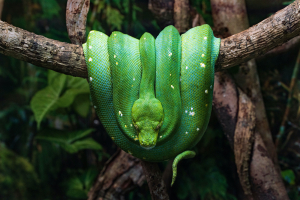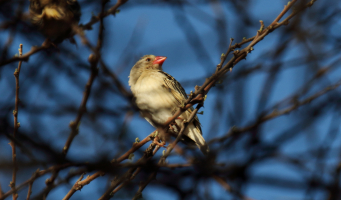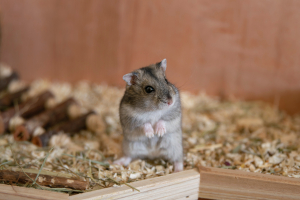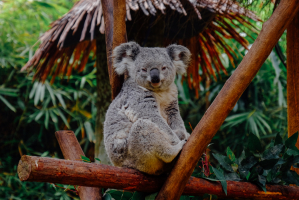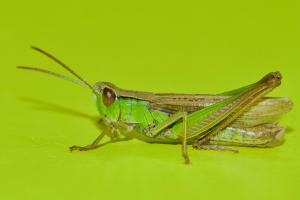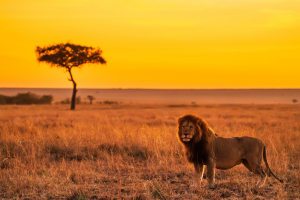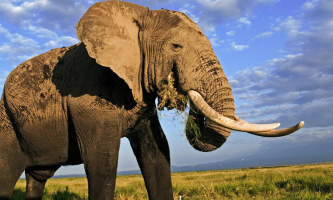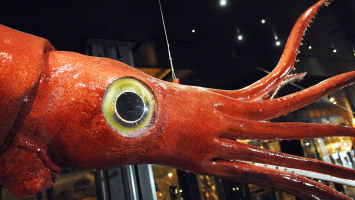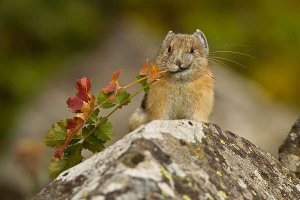Top 15 Common Animals That Start With "J"
In the expansive realm of the animal kingdom, several captivating creatures share a common beginning - they all start with the letter "J." From the jungles to ... read more...the skies, these animals bring a unique blend of characteristics, behaviors, and ecological roles to our diverse planet. Let's delve into the world of some common animals that proudly bear the letter "J" in their names.
-
The jabiru, a stately and majestic bird, is a prominent species of stork found in the Americas, particularly in Central and South America. Scientifically known as Jabiru mycteria, this impressive avian creature holds a significant position within its ecosystems, captivating the attention of wildlife enthusiasts and conservationists alike.
One of the most striking features of the jabiru is its imposing stature, as it stands as one of the largest bird species in the Americas. Its impressive height, which can reach up to 5 feet, combined with its expansive wingspan, makes it a formidable presence in wetland habitats and savannas where it is commonly found. The jabiru's plumage is predominantly white, complemented by a vivid black neck, head, and legs, and a conspicuous red throat pouch. These distinctive physical traits contribute to its regal appearance and make it an iconic species within its range.
The jabiru's ecological significance extends beyond its sheer size and remarkable physical attributes. As a wetland-inhabiting bird, it plays a crucial role in the balance and functionality of its habitat. Their expansive ranges encompass various freshwater ecosystems, including marshes, wetlands, and flooded savannas, where they contribute to the regulation of aquatic populations. Their omnivorous diet, which includes fish, amphibians, reptiles, insects, and small mammals, underscores their role as apex predators and vital components of wetland food webs.
The jabiru's breeding behaviors are another aspect of its natural history that garners attention and admiration. During the mating season, these birds engage in elaborate courtship displays, characterized by impressive aerial acrobatics and vocalizations, reinforcing the social bonds between mates. Once a suitable nesting site is found, often in tall trees or on platforms constructed of sticks, the female jabiru lays a clutch of eggs, and both parents diligently care for and protect the nest and their offspring.
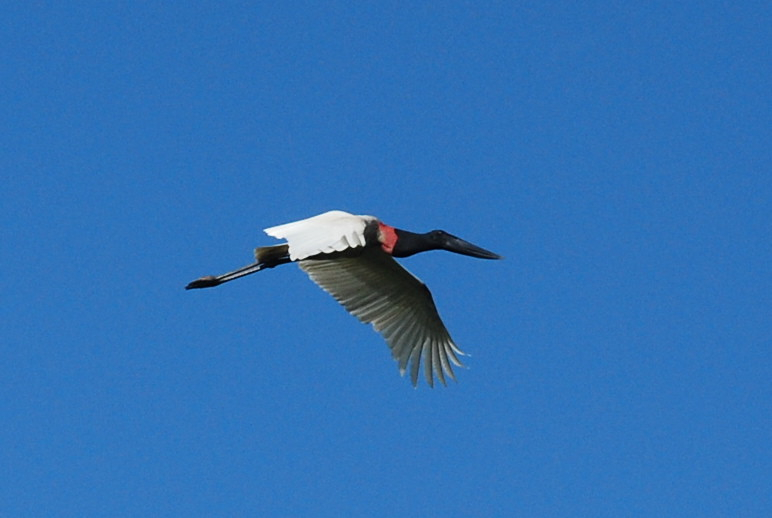
Photo on Flickr Video by WildBoi Pete -
The jacana, a fascinating and distinctive wader bird, holds a notable place on the list of common animals that start with "J". Belonging to the family Jacanidae, these striking birds are predominantly found in tropical and subtropical regions, particularly across the Americas, Africa, and Asia. Their unique attributes and ecological significance contribute to their status as captivating subjects of study and admiration within the birdwatching and scientific communities.
One of the most remarkable features of the jacana is its extraordinary foot structure, which sets it apart from many other avian species. Equipped with elongated toes and claws, the jacana possesses specialized adaptations that enable it to traverse the floating vegetation and lily pads that constitute its preferred aquatic habitats. This fascinating adaptation allows the jacana to gracefully walk on water, displaying a unique and captivating behavior that distinguishes it from other wetland-dwelling birds.
The jacana's striking appearance and intriguing foot adaptations are complemented by its distinctive breeding biology, which further enhances its allure. In many jacana species, it is the male that assumes the primary responsibility for nesting and rearing the offspring. Females, on the other hand, establish and defend territories, often mating with multiple males in a striking reversal of traditional avian breeding roles. This unconventional and noteworthy reproductive strategy underscores the intriguing social dynamics and behaviors exhibited by jacanas, making them subjects of particular interest and study in the field of avian ethology.
Ecologically, jacanas play a significant role in their wetland habitats, particularly in the regulation of invertebrate populations. Their omnivorous diet, which encompasses a variety of insects, small crustaceans, and plant matter, contributes to the balance of their ecosystems. Additionally, their foraging behaviors have been observed to aid in the dispersion of aquatic plant seeds, further shaping the composition and dynamics of their habitat.
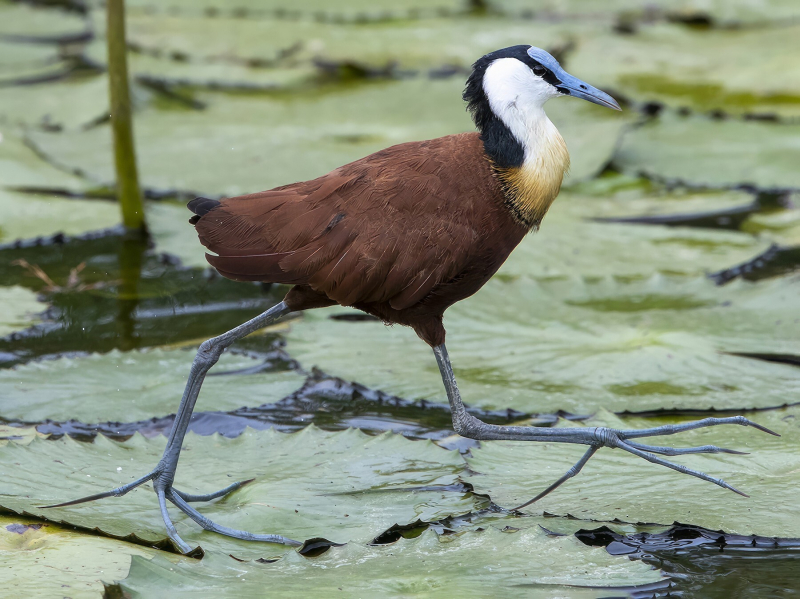
ebird.org Video by Nature on PBS -
The jackal, a cunning and adaptable carnivore, stands out as one of the common animals that start with the letter "J." Belonging to the Canidae family, which also includes wolves and domestic dogs, jackals have a distinct appearance and play important roles in various ecosystems.
There are three main species of jackals: the golden jackal (Canis aureus), the black-backed jackal (Canis mesomelas), and the side-striped jackal (Canis adustus). Each species has its own unique characteristics and is distributed across different regions of Africa and parts of Asia.
One of the defining features of jackals is their slender and lightweight build, adapted for swift movements and agile hunting. They typically have a sandy or tan-colored coat, providing effective camouflage in their natural habitats. Jackals possess keen senses, including sharp eyesight and acute hearing, making them proficient hunters and scavengers.
Jackals are highly adaptable and can thrive in a variety of environments, ranging from arid deserts to grasslands and woodlands. They are opportunistic feeders, consuming a diverse diet that includes small mammals, birds, insects, and carrion. Their scavenging behavior plays a crucial role in maintaining the balance of ecosystems by helping clean up carcasses and prevent the spread of diseases.
These carnivores are known for their distinctive vocalizations, including yips, howls, and barks. Vocal communication serves various purposes, such as establishing territory, coordinating group activities, and signaling danger. Jackals are social animals, often forming family groups or pairs to enhance their hunting and survival capabilities.
In some cultures, jackals have earned symbolic significance. In ancient Egyptian mythology, the god Anubis, associated with mummification and the afterlife, is depicted with the head of a jackal. The jackal's presence in folklore and mythology reflects its influence on human imagination throughout history.
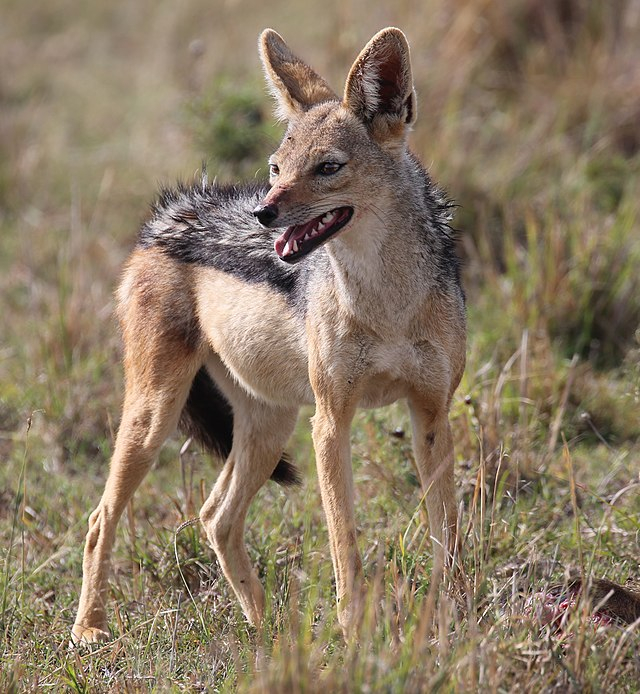
en.wikipedia.org Video by Nat Geo WILD -
The jellyfish, a fascinating and ancient marine creature, is a prominent representative among animals that start with the letter "J." These gelatinous beings belong to the phylum Cnidaria and are found in oceans worldwide, exhibiting a wide range of shapes, sizes, and colors.
One of the distinctive features of jellyfish is their umbrella-shaped bell, which comprises a soft, transparent body. Hanging from the center of the bell are long, trailing tentacles equipped with specialized cells called cnidocytes. These cells contain nematocysts, tiny harpoon-like structures that inject venom into prey or potential threats.
Jellyfish are remarkably diverse, with thousands of species identified to date. Some species are small and nearly invisible, while others, such as the lion's mane jellyfish, boast tentacles that can extend over 120 feet (36 meters). Their varied appearances and adaptations contribute to their success in different oceanic environments.
Despite their name, jellyfish are not true fish; they lack a backbone and belong to a different branch of the animal kingdom. Their movements are orchestrated by a simple nervous system that allows them to pulse and drift through the water. While jellyfish can propel themselves, they are largely at the mercy of ocean currents.
Jellyfish play crucial roles in marine ecosystems, serving as both predators and prey. They feed on small fish, plankton, and even other jellyfish, while providing sustenance for larger marine creatures, such as sea turtles and certain species of fish. The balance of jellyfish populations is essential for maintaining the health of ocean ecosystems.
The lifecycle of a jellyfish involves fascinating transformations. Starting as a tiny larva, the jellyfish develops into a polyp, a stationary phase resembling a small tube attached to a substrate. Eventually, the polyp transforms into a free-swimming medusa, the familiar bell-shaped stage, capable of producing more jellyfish through asexual reproduction.
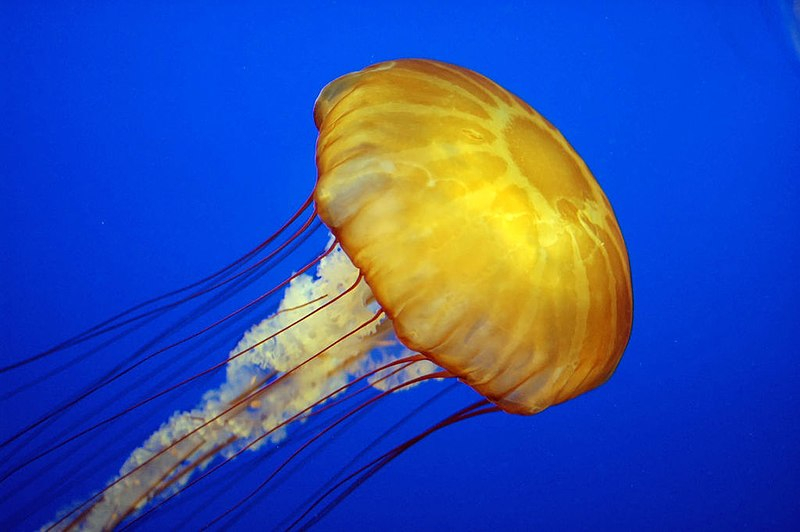
en.wikipedia.org Video by Nat Geo WILD -
The jerboa, a small and captivating creature inhabiting arid regions of Asia and Northern Africa, is a remarkable member of the rodent family. This diminutive mammal, known for its unique adaptations, has carved out a niche for itself in the challenging desert ecosystems where it thrives.
With its distinct appearance, the jerboa is easily recognized by its elongated hind legs and a lengthy tail. These adaptations are crucial for its survival in the sandy landscapes it calls home. The hind legs enable the jerboa to execute remarkable leaps and bounds, allowing it to traverse the uneven terrain and evade predators with agility. Its tail serves as a counterbalance during these leaps, contributing to its exceptional mobility in the desert environment.
Jerboas come in various species, each adapted to their specific habitats, but they share common characteristics. Their fur is often sandy or pale in color, providing effective camouflage against the arid backdrop. Their large eyes, adapted for nocturnal living, allow them to navigate the darkness and spot potential threats or sources of food.
These remarkable rodents have also evolved to minimize their water needs, a crucial adaptation in their arid environments. Jerboas obtain most of their water from the seeds and plants they consume, significantly reducing their reliance on external water sources. This water-efficient lifestyle is an essential strategy for survival in regions where water is scarce.
Jerboas are primarily herbivores, feeding on seeds, plants, and occasionally insects. Their diet is well-suited to the desert landscape, where vegetation might be sparse, and they have developed efficient ways to extract nutrients from their food.
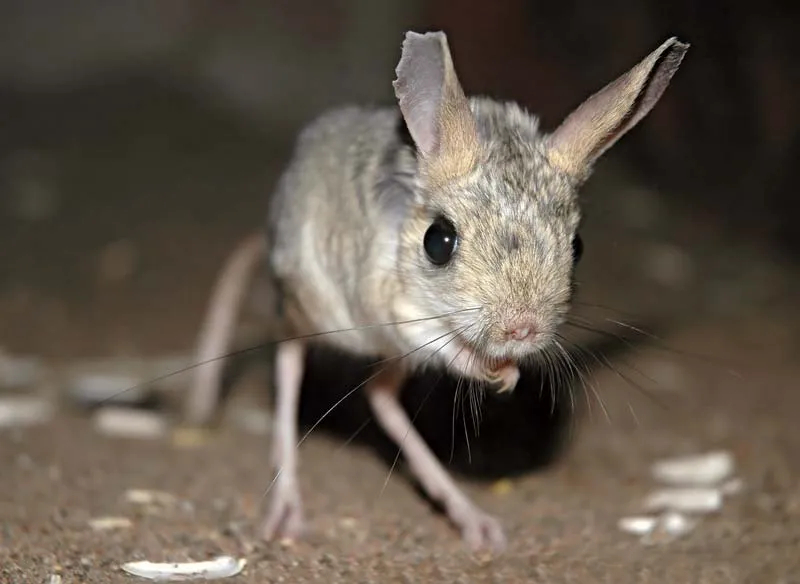
britannica.com Video by BBC Earth -
The jay is a diverse and fascinating genus of birds belonging to the Corvidae family, known for its striking appearance, intelligence, and diverse ecological impact. With approximately 35 known species spread across various regions worldwide, including Europe, Asia, Africa, and North America, jays are truly remarkable avian creatures that have captured the interest of ornithologists and nature enthusiasts alike.
One of the most striking features of the jay is its vibrant and colorful plumage, characterized by a blend of blue, black, and white feathers, often accented by eye-catching patterns. These colors are not only aesthetically appealing but also serve as effective camouflage in the dense woodlands and forested habitats where many jays are found. The bold and striking appearance of the jay makes it easily recognizable and a sought-after sight for birdwatchers.
The jay's intelligence and adaptability are also noteworthy, as these birds have exhibited remarkable problem-solving skills and complex social behaviors. They are known to be highly vocal, utilizing an extensive array of calls and vocalizations for communication within their social groups and to warn of potential threats. Additionally, jays are recognized for their cleverness in caching food, using their spatial memory to hide and retrieve nuts and seeds for later consumption. This behavior not only showcases their cognitive abilities but also plays a vital role in the dispersion of plant seeds, contributing to the regeneration of forested ecosystems.
In terms of ecological impact, jays are considered important contributors to the balance and diversity of their respective habitats. Their foraging behaviors, particularly their role as seed dispersers, influence the regeneration and diversity of plant species. Furthermore, jays are known to feed on a variety of invertebrates, contributing to the regulation of insect populations. Their intricate ecological relationships and foraging habits make them valuable components of forest ecosystems.
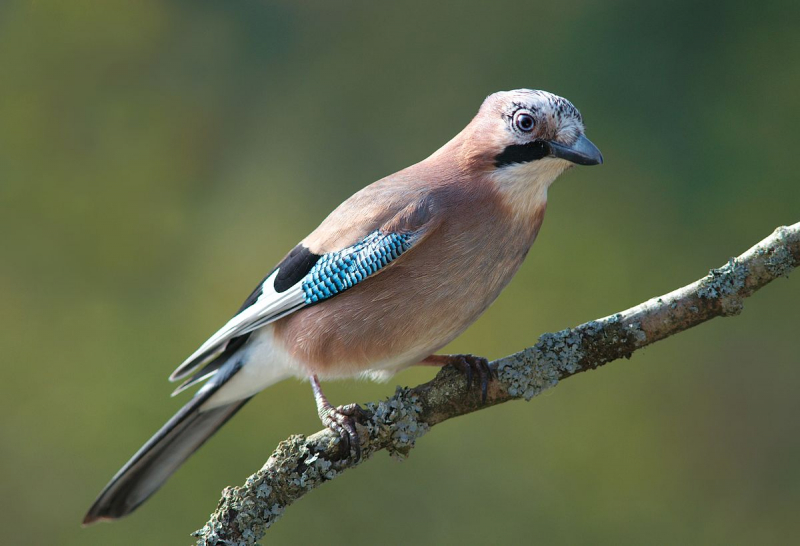
en.wikipedia.org Video by Animal Fact Files -
The jaeger, a formidable seabird often associated with the remote and frigid regions of the world, is a powerful and skilled predator of the open ocean. Known for its striking appearance and impressive hunting techniques, the jaeger plays a vital role in marine ecosystems, contributing to the delicate balance of oceanic food chains.
Belonging to the family Stercorariidae, jaegers are medium to large-sized birds characterized by their robust build, sharp beaks, and remarkable aerial agility. These seabirds are renowned for their striking and varied plumage, often exhibiting a combination of dark and light colors. Jaegers have adapted to a life at sea, with long, pointed wings that facilitate effortless gliding and precise maneuvering over the vast expanses of the ocean.
One of the notable features of jaegers is their predatory behavior. Aptly nicknamed "skuas of the seas," these birds are skilled pirates of the avian world, often engaging in kleptoparasitism. They are known to harass other seabirds, forcing them to regurgitate their recent catches, which the jaeger skillfully appropriates. This behavior is a survival strategy, allowing jaegers to capitalize on the hunting efforts of other species without expending their own energy in pursuit.
There are several species of jaegers, each adapted to different aspects of oceanic life. The long-tailed jaeger, for instance, is recognized for its lengthy tail feathers and graceful flight, while the parasitic jaeger is known for its aggressive and opportunistic feeding habits.
Jaegers are migratory birds, traveling vast distances between their breeding grounds in the Arctic tundra and their wintering areas in more temperate or tropical regions. During the breeding season, they establish nests on open tundra, laying well-camouflaged eggs to protect against potential predators.
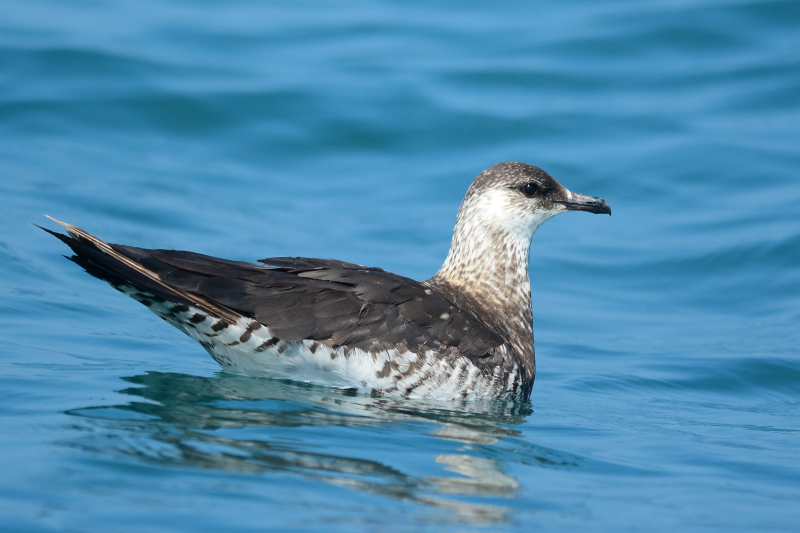
en.wikipedia.org Video by Animal Square -
Jacob Sheep, a distinctive and visually striking breed, stands out among the diverse array of sheep found around the world. Known for its distinctive appearance and historical significance, the Jacob Sheep has captured the attention of farmers, historians, and enthusiasts alike.
Originating from the Middle East, Jacob Sheep gets its name from the biblical figure Jacob, as described in the Book of Genesis. The breed's unique and eye-catching feature is its multi-horned appearance. While most sheep typically have two horns or are polled, Jacob Sheep can have anywhere from two to six horns, creating an unmistakable and captivating look.
In addition to their distinctive horns, Jacob Sheep are known for their piebald fleece. Their wool exhibits a mix of black and white patches, creating a visually striking coat that sets them apart from other sheep breeds. This unique coloring is often referred to as "spotted" or "pied" and adds to the breed's allure.
Beyond their appearance, Jacob Sheep are valued for their adaptability and hardiness. These sheep are well-suited to various climates and terrains, making them resilient in different farming environments. Their ability to graze on a variety of vegetation and their relatively low maintenance needs make them appealing to farmers seeking a versatile and sustainable livestock option.
Jacob Sheep have found homes not only on traditional farms but also in conservation efforts. As a heritage breed, preserving and maintaining Jacob Sheep populations contributes to the conservation of genetic diversity within livestock. Various breed societies and organizations work to ensure the continued welfare and promotion of Jacob Sheep, recognizing their historical significance and unique attributes.
In recent years, Jacob Sheep has gained popularity among small-scale farmers, hobbyists, and those interested in sustainable agriculture. Their distinctive appearance and hardy nature make them not only practical for farming purposes but also attractive for those looking to add a touch of uniqueness to their flocks.
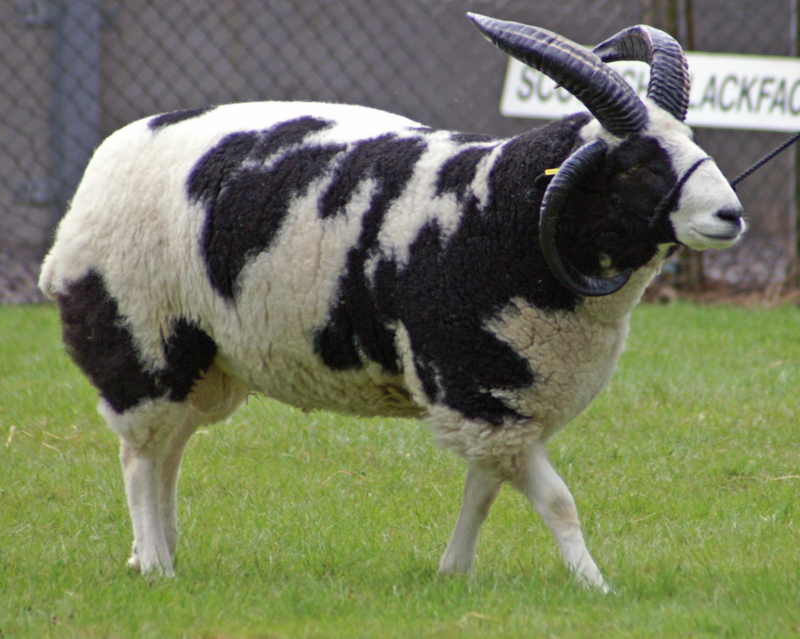
en.wikipedia.org Video by Agronomag -
The jackdaw, scientifically known as Corvus monedula, is a charismatic and highly intelligent member of the crow family, Corvidae. Widely distributed across Europe and parts of Asia, these small, black-plumaged birds have found a place in folklore, literature, and the hearts of bird enthusiasts.
Measuring about 12 to 14 inches in length, the jackdaw is distinguishable by its sleek, predominantly black plumage, pale gray nape, and distinctive pale eyes. Despite its relatively modest size, the jackdaw possesses remarkable adaptability and intelligence, characteristics that contribute to its success in various environments, from urban areas to rural landscapes.
One notable feature of the jackdaw is its gregarious nature. These birds are highly social, forming large flocks that roost together and engage in communal activities. The social structure within a jackdaw flock is intricate, with individuals forming strong bonds and participating in cooperative behaviors, such as mobbing predators or foraging together.
Jackdaws are known for their vocalizations, emitting a range of calls that include harsh "kaw" sounds. Their communicative abilities extend beyond vocalizations, with gestures and body language playing essential roles in conveying information within the flock. Research has indicated that jackdaws possess problem-solving skills and can recognize themselves in mirrors, highlighting their cognitive abilities.
Nesting in a variety of locations, from tree hollows to chimneys and even on buildings, jackdaws exhibit adaptability in their choice of habitats. The breeding season typically begins in spring, with pairs constructing nests using twigs, grass, and other materials. Female jackdaws lay a clutch of eggs, and both parents participate in incubation and caring for the young.
While jackdaws are omnivores, their diet consists of a diverse range of food items. They feed on insects, seeds, grains, and even scavenged human food. In urban environments, jackdaws have been observed using their intelligence to manipulate objects and access food resources, showcasing their adaptability to human-altered landscapes.
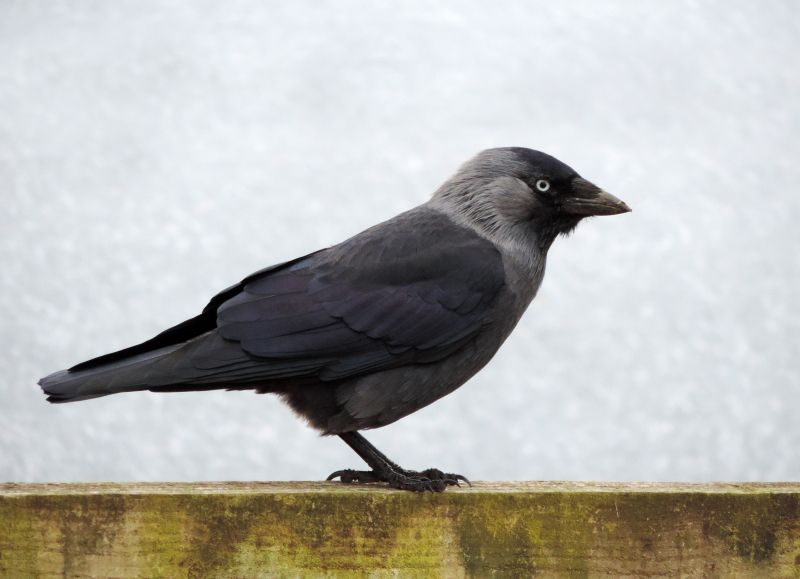
pexels.com Video by A Shot Of Wildlife -
The jackrabbit, a large and iconic hare of North and Central America, belongs to the genus Lepus. Renowned for its distinctive long ears and powerful hind legs, the jackrabbit is not only a symbol of the American West but also an intriguing species with remarkable adaptations for survival in arid environments.
Named for its prominent ears that can measure up to six inches in length, the jackrabbit's unique physical features serve various functional purposes. The large ears play a crucial role in thermoregulation, helping dissipate excess body heat in the hot desert climates where many jackrabbits reside. Additionally, these keen ears are instrumental in detecting predators, allowing the jackrabbit to react swiftly to potential threats.
The jackrabbit's fur varies in color, providing effective camouflage in different habitats. Typically, their coat ranges from a sandy or reddish-brown to a grizzled gray. This adaptive coloration, combined with their agility and speed, makes jackrabbits well-suited for survival in diverse environments, from open grasslands to deserts and scrublands.
One of the most distinctive features of the jackrabbit is its powerful hind legs, built for remarkable bursts of speed and impressive leaps. These adaptations aid in evading predators, with jackrabbits capable of reaching speeds of up to 40 miles per hour and covering distances of over 10 feet in a single leap. Such agility is crucial for their survival, allowing them to navigate through varied terrains while escaping from potential threats.
Jackrabbits are primarily herbivores, feeding on a diet of grasses, shrubs, and other vegetation. Their efficient digestive systems allow them to extract nutrients from tough, fibrous plant materials, contributing to their ability to thrive in arid and semi-arid regions where water sources may be limited.
The reproductive strategy of jackrabbits is characterized by high fecundity. Females, known as does, can produce several litters of one to six leverets (young hares) each year. This reproductive strategy is an adaptation to the high predation rates that jackrabbits face in the wild.
Leverets are born fully furred with open eyes, ready to fend for themselves shortly after birth. While the term "jackrabbit" is often used generically, there are several species of hares in North America that are referred to as jackrabbits, including the black-tailed jackrabbit (Lepus californicus), white-tailed jackrabbit (Lepus townsendii), and others.
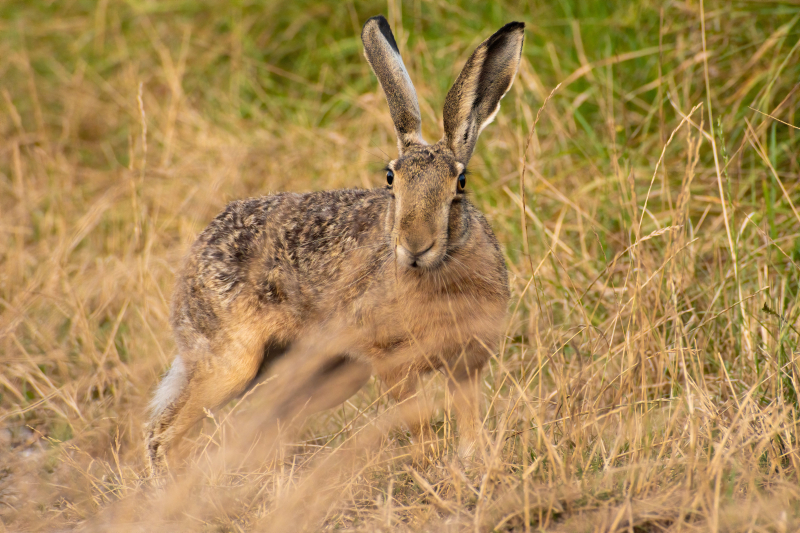
pexels.com Video by Nat Geo WILD -
The Javan warty pig (Sus verrucosus), also known as the Javan pig or Javan pig-deer, is a fascinating and endangered species native to the island of Java in Indonesia. This pig species belongs to the Suidae family and is recognized for its distinctive appearance, behaviors, and its critical status in terms of conservation.
Javan warty pigs exhibit a unique and striking appearance with dark, bristly coats covered in characteristic warts or protuberances. These warts, particularly prominent in males, contribute to their name and give them a distinct and almost prehistoric appearance. The warts are more pronounced in older individuals, making them easily distinguishable from other pig species.
Typically, Javan warty pigs are medium-sized, with a robust build and relatively short legs. Their snouts are elongated, and they possess sharp tusks, especially in males, which are used for various purposes, including digging and defending themselves against predators or rivals. Their omnivorous diet consists of roots, tubers, fruits, insects, and small vertebrates.
The Javan warty pig is a primarily terrestrial species, inhabiting a range of environments, from dense forests to grasslands. However, deforestation and habitat loss due to agricultural expansion and human settlement have significantly impacted their native habitats. As a result, these pigs are increasingly confined to fragmented areas, increasing their vulnerability to extinction.
The reproductive habits of Javan warty pigs are characteristic of suids. Females typically give birth to litters of piglets after a gestation period of around four months. The piglets are born with a striped coat, providing them with some degree of camouflage in their natural environment. They grow rapidly and become more independent as they age.
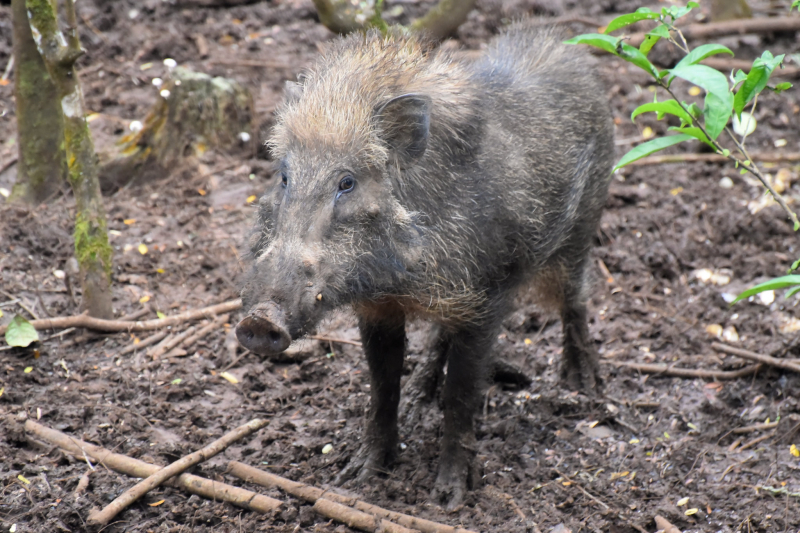
flickr.com Video by National Geographic -
The Jutland horse, a majestic equine breed originating from Denmark, stands as a testament to both strength and grace in the world of horses. Renowned for its robust build, friendly demeanor, and versatility, the Jutland has earned its place as a symbol of Danish heritage and a valued companion for various equestrian activities.
One of the oldest horse breeds in Denmark, the Jutland has a rich history that dates back centuries. Developed for agricultural purposes, these horses were integral to the farms of Jutland, the Danish peninsula from which they take their name. Their strong, muscular build and steadfast temperament made them invaluable partners in plowing fields and pulling heavy loads.
Physically, the Jutland horse is characterized by its powerful stature. Typically, it stands between 15 to 16 hands high, with a robust, compact body. The breed's distinctive appearance is accentuated by its broad forehead, expressive eyes, and well-arched neck. The most notable feature is its chestnut coat, which ranges from light sorrel to a deep, dark shade, occasionally with flaxen mane and tail.
Beyond their physical attributes, Jutland horses are known for their amiable and cooperative nature. Their gentle temperament makes them suitable for various equestrian disciplines, from agricultural work to riding and driving. Despite their strength, Jutlands are often described as willing and easy to handle, endearing them to both experienced equestrians and those new to horse care.
In the modern era, Jutland horses continue to play a role in agriculture, particularly in Denmark, though their adaptability has seen them embraced in diverse equestrian activities worldwide. They thrive in various climates and are appreciated for their willingness to work and their strong connection with their human handlers.
Efforts to preserve and promote the Jutland breed have been ongoing, recognizing its historical significance and valuable attributes. Breed associations and enthusiasts work together to maintain the breed's integrity, ensuring that future generations can appreciate the Jutland horse's contribution to agriculture, culture, and the equestrian world.
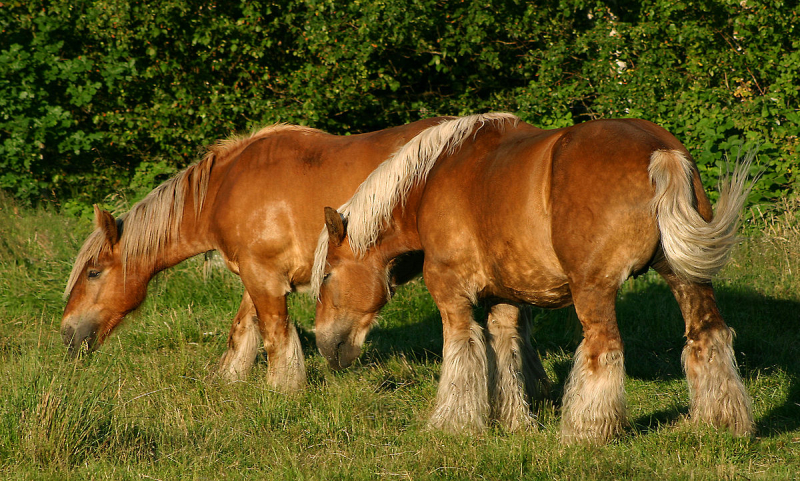
wikipedia.org Video by Buchinka -
The Javan gibbon (Hylobates moloch), also known as the silvery gibbon or Moloch gibbon, is a critically endangered primate species native to the island of Java in Indonesia. As one of the world's most distinctive and threatened primates, the Javan gibbon holds both ecological and cultural importance, drawing attention to the urgent need for conservation efforts.
Known for its striking appearance, the Javan gibbon has a glossy black coat with silver or beige markings on its face and chest. This coloration gives them a unique and charismatic presence in their natural habitat. They are sexually monomorphic, meaning that males and females share similar physical characteristics, and their vocalizations are notable for their haunting and melodic quality, often echoing through the dense forests they inhabit.
Javan gibbons are arboreal, spending the majority of their lives in the upper canopy of rainforests. Their long arms and powerful hind limbs are adaptations for brachiation, or swinging from branch to branch, allowing them to cover large distances efficiently. This locomotion is vital for foraging and avoiding predators in their forested homes.
The Javan gibbon lives in small family groups consisting of a monogamous pair and their offspring. These family units engage in complex social behaviors, including grooming, vocal communication, and territorial displays. The bond between mates is powerful, and pairs often engage in coordinated vocal duets as a means of reinforcing their pair bond and defending their territory.
The primary diet of Javan gibbons is composed of fruits, leaves, flowers, and insects. Their feeding habits contribute to the dispersal of seeds in their forest environment, playing a crucial role in the maintenance and regeneration of the ecosystem.
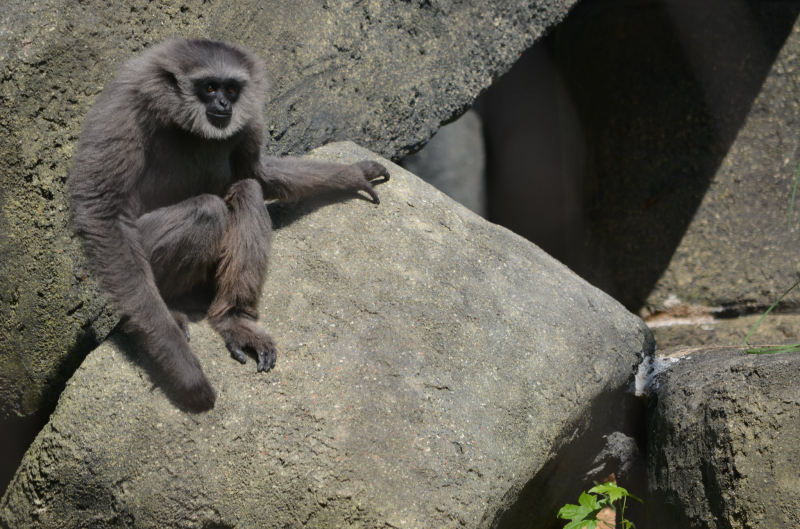
flickr.com Video by South China Morning Post -
The jacamar, a dazzling and distinctive bird, is a captivating representative among animals that start with the letter "J." Belonging to the family Galbulidae, jacamars are predominantly found in the tropical regions of Central and South America, inhabiting lush forests, woodlands, and riverbanks.
Jacamars are known for their vibrant and iridescent plumage. These birds often display a kaleidoscope of colors, including shades of green, blue, and red, making them a visual delight. The brilliance of their plumage is not only aesthetically pleasing but also serves practical purposes, aiding in communication and courtship displays.
Jacamars have a distinctive appearance with a compact body, short neck, and long, pointed bills. Their bills are adapted for catching flying insects, which form a significant part of their diet. With swift and agile flight, jacamars are skilled aerial hunters, capturing insects on the wing. Their sharp bills allow them to snatch prey with precision, showcasing their adaptability to life in the forest canopy.
These birds are known for their solitary nature, often perching on branches or wires to scan their surroundings for potential prey. While primarily insectivorous, jacamars may also consume small fruits and berries as supplementary food sources. Their foraging behavior contributes to the ecological balance in their habitats by helping control insect populations.
Jacamars play a crucial role in the ecosystems they inhabit, contributing to seed dispersal as they feed on fruits. Additionally, their presence serves as an indicator of the overall health of the forest environment, as they are sensitive to changes in habitat conditions.
Several species of jacamars exist, each with unique characteristics. The great jacamar (Jacamerops aureus) and the rufous-tailed jacamar (Galbula ruficauda) are examples of species known for their stunning plumage and distinctive calls. These calls are essential for communication, aiding in territory marking and attracting potential mates.
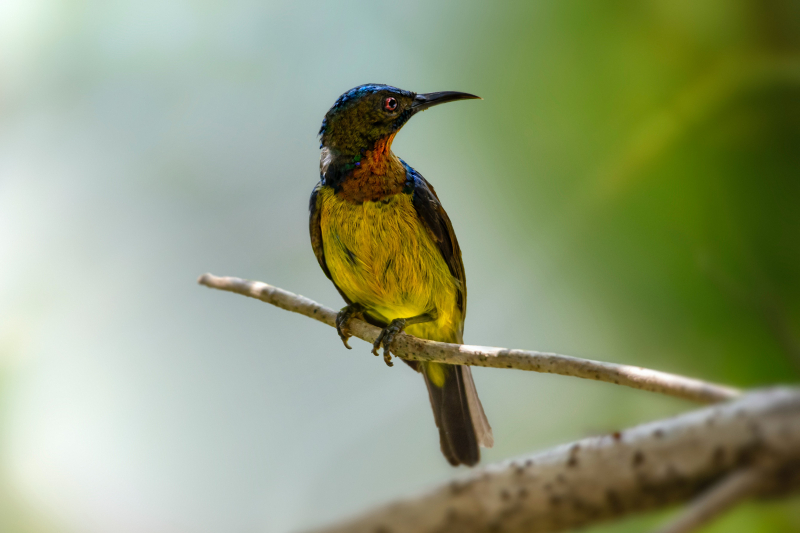
pexels.com Video by The Wild Files -
Jackfish, also known as jackfishes or jack, is a collective term used to refer to various species of predatory fish found in both saltwater and freshwater environments. These fish are members of the Carangidae family, and they are characterized by their streamlined bodies, powerful tails, and a set of spines or scutes along their lateral lines.
One well-known member of the jackfish family is the Giant Trevally (Caranx ignobilis), a formidable predator found in the tropical and subtropical waters of the Indo-Pacific region. Known for its impressive size, strength, and predatory behavior, the Giant Trevally is a prized catch for recreational anglers.
Jackfish species are typically silvery in color, with a streamlined and muscular body built for speed and agility. They have forked tails that enable swift movements through the water, making them highly efficient hunters. Some jackfish species display distinctive markings or coloration, aiding in their camouflage as they patrol the open ocean or coastal areas.
These fish are known for their voracious feeding habits, preying on smaller fish, crustaceans, and cephalopods. Their sharp teeth and powerful jaws allow them to capture and consume a wide range of prey. Jackfish are often opportunistic feeders, taking advantage of schools of smaller fish or hunting near underwater structures like reefs or drop-offs.
In addition to their ecological roles as top predators, jackfish also play a significant role in the economies of many coastal communities. They are popular targets for both commercial and recreational fishing due to their size, strength, and the challenge they present to anglers. Anglers appreciate the sportfishing opportunities provided by jackfish, and their pursuit has become a specialized and exciting aspect of recreational fishing in many regions.

floridasportsman.com Video by Landshark Outdoors

















